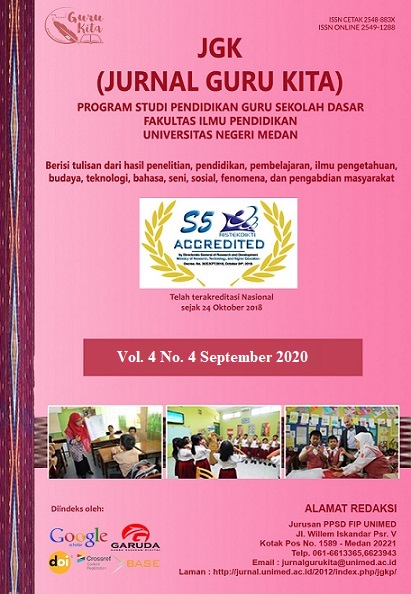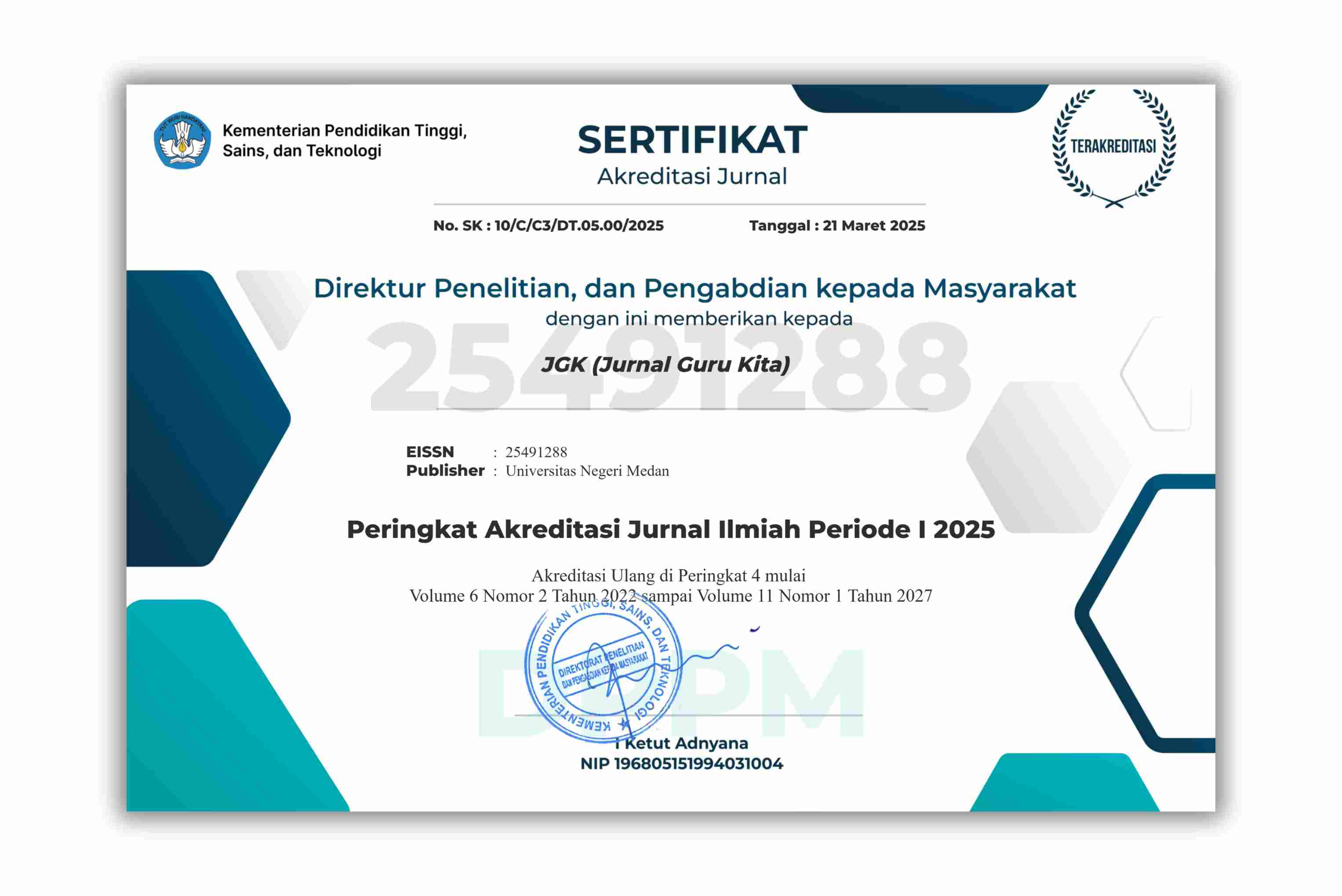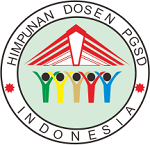UPAYA MENINGKATKAN HASIL BELAJAR SUDUT BERELASI DI BERBAGAI KUADRAN DENGAN MENGGUNAKAN e-MODUL PADA SISWA KELAS X TKJ 3 SMKN 4 PEKANBARU TAHUN 2019
DOI:
https://doi.org/10.24114/jgk.v6i2.33522Keywords:
Improvement, Learning outcomes, e-moduleAbstract
Efforts to Improve Related Angle Learning Outcomes In Various Quadrants By Using E-Modules In Class X Students Of Tkj 3 Smkn 4 Pekanbaru In 2019. the problem to be studied in this action research is: can using e-modules improve learning outcomes of related angles in various quadrants in class X TKJ3 students of SMK Negeri 4 Pekanbaru city in 2019. The research objectives to be obtained are: (a) To determine the learning activities of students in mathematics by using e-modules. (b) To improve student learning outcomes in class X TKJ3 SMKN 4 Pekanbaru. This study uses two rounds of action research. Each round consists of four stages, namely: design, activities and observations, reflection, and revision. The target of this research is the students of Class X TKJ3. The data obtained in the form of formative test results, observation sheets of teaching and learning activities. Based on the results of observations and data processing that there was an increase in student learning outcomes in the second cycle where all activities increased with an average percentage of 77.38% and included in the Very Good category. In general, the average student learning activity in the first cycle was 3.8 with a Good category, while in Cycle II the average student activity became 4.1 with a Very Good category. The average student learning activities in cycles I and II are in the Good category. Based on the data above, the writer concludes that e-modules can improve learning outcomes related angles in various quadrants in mathematics subjects and have a positive impact on student learning activities, especially in class X TKJ3 students.References
Ahmadi, Abu dan Jok tri Prasetya. 1997. Strategi Belajar Mengajar,Bandung: CV Pustaka Setia.
Dimyati dan Mudjiono. 1990. Belajar dan Pembelajaran.Jakarta: Rineka Cipta.
Djamarah, S.B dan Aswan Zain.1996.Strategi Belajar Mengajar. Jakarta: Rineka Cipta
Farzaneh, S. Rohani, A.T, & Ahmad fauzi. 2014.Utilization of Information and Communication Technologies in Mathematics Learning, IndoMS-JME. 5(2):138-147
Hadi, Sutrisno. 2002. Metodelogi Research jilid I. Yogyakarta: Penerbit Andi
Haryanto.1997 Perencanaan Pembelajaran, Jakarta: Rineka Cipta.
Imron, Ali. 1996. Belajar Dalam Pembelajaran. Jakarta: PT Dunia Pustaka Jaya.
Nasution.2000. Diaktit Asas-Asas Mengajar.Jakarta : PT Bumi Aksara.
Pasaribu dan Simanjutak. 1989. Diaktit dan Metodik. Bandung: Transito
Purcell, E.J. and D. Varberg, 1995, Kalkulus dan Geometri Analitis, Jilid I Edisi Kelima, Penerbit Erlangga, Jakarta
Rostyah. 1998. Strategi Belajar Mengajar. Jakarta: Rineka Cipta
Slameto.1995 Belajar dan Faktor-Faktor Yang Mempengaruhinya. Jakarta: RinekaCipta
Suarsana. 2013 œPengembangan E-Modul Berorientasi Pemcahan Masalah Untuk Meningkatkan Keterampilan Berfikir Kritis Mahasiswa. Jurnal. 2(2):89-101
Sudirman, dkk.1991.Ilmu Pendidikan. Bandung: Remaja RoSMKakarya.
Sudjana, Nana.1990. Penilaian Hasil Mengajar. Bandung: Remaja RoSMKakarya
Suharto. 1996. Pendidikan dan Tehnik Dalam Proses Belajar Mengajar. Bandung Transito
Tim Pelatih Proyek PGSM. 1999. Pendidikan Tindakan Kelas. Jakarta: DirjenPendidikan Tinggi.
Usman, Uzer. 1997. Menjadi Guru Profesional. Bandung: Remaja RoSMKakarya
Wena, M. 2013. œPengembangan e-Modul Bermuatan Model Perubahan Konseptual Dalam Pembelajaran Fisika Di SMA. Jurnal Santi Aji Pendidikan. 1(1):51-64
Downloads
Published
How to Cite
Issue
Section
License
Authors published with the JGK (Jurnal Guru Kita) agree to the following terms:
- Authors retain copyright and grant the journal the right of first publication with the work simultaneously licensed under a Creative Commons Attribution License (CC BY-SA 4.0) that allows others to share the work with an acknowledgment of the work's authorship and initial publication in this journal.
- Authors are able to enter into separate, additional contractual arrangements for the non-exclusive distribution of the journal's published version of the work (e.g., post it to an institutional repository or publish it in a book), with an acknowledgment of its initial publication in this journal.
- Authors are permitted and encouraged to post their work online (e.g., in institutional repositories or on their website) prior to and during the submission process, as it can lead to productive exchanges, as well as earlier and greater citation of published work. (See The Effect of Open Access)

























